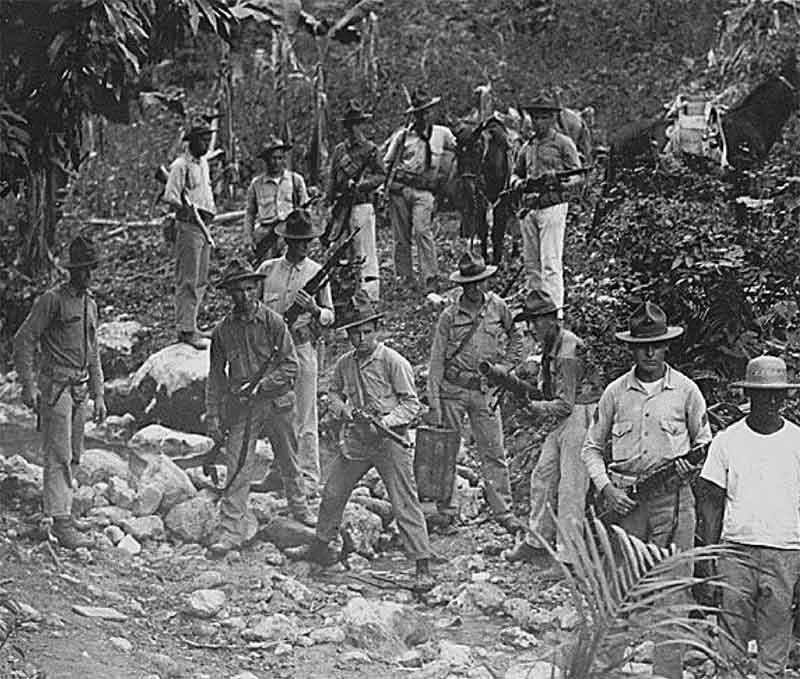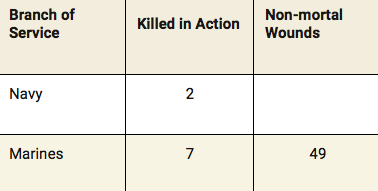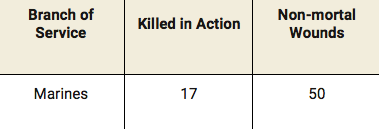Pacification of Haiti and the Dominican Republic
1915 – 1918
Before the end of the 19th century, American businessmen provided half of all goods imported by Haiti and dominated its banks and railroads. In the wake of an anti-government uprising in 1915 that claimed the life of Haitian president Guillaume Sam, U.S. President Woodrow Wilson sent the sailors and Marines of the USS Washington—along with a further brigade of Marines—to protect American lives and property there.
Instead of pulling back into the mountainous interior, the rebel bandits actively resisted the American occupation and the de facto control of their country. “The Marines quelled sporadic violence for over a year. In 1916-1918, U.S. occupation forces attempted to win over the peasantry and implement construction programs, but they remained unpopular.” The resident U.S. naval commander attempted to restructure the Haitian government, first by dissolving the Haitian Congress and then by dictating a new constitution. Although a special commission created by President Herbert Hoover determined that the occupation had failed to solve Haiti’s problems, it wasn’t until 1934 that President Franklin finally ordered the marines home as part of his Good Neighbor Policy while still retaining economic connections.

During much of the same period, U.S. Naval and Marine personnel occupied the Dominican Republic on another half of Hispaniola. Here too, American business interests controlled much of the country’s sugar industry as well as dominating its general overseas trade. Having sent armed incursions in 1904, 1905, 1912, and 1914, the Marines arrived again in 1916, this time to counter “growing U.S. fears of Germany’s influence in the Caribbean.” This time, a “military government headed by U.S. Navy and Marine officers, backed by several thousand Marines, displaced the constitutional Dominican government in 1916.” Limited initial resistance soon turned into a five-year long guerilla war (1917-1922) against the American occupation, from which the Americans finally withdrew in 1924.
RECOMMENDED READING
Marines in the Dominican Republic, 1916-1924
by Stephen M. Fuller and Graham A. Cosmas
Dominican Action – 1965: Intervention or Cooperation?
by Georgetown University, Center for Strategic Studies
A Pocket Guide to the Caribbean
by Armed Forces Information and Education, Department of Defense
All books are available at our Museum Library which is open to the public every Thursday from 10am to 4pm.
AMERICAN CASUALTIES IN HAITI

AMERICAN CASUALTIES IN DOMINICAN REPUBLIC

